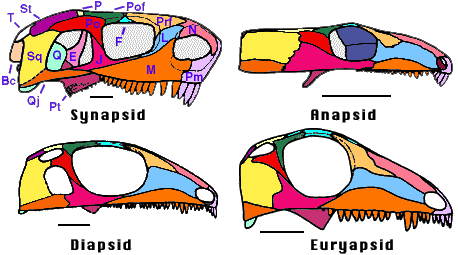Much of what we have today we take for granted. One such thing is our bodies. The subtle beauty of adaptation and evolution we as a species have undergone exhibits far more than just natural selection; it demonstrates our capability to become better, stronger, and faster. Yet, why do we still see prevalent cases of illness and disease inflicting the human society? Why do many people ALWAYS cavities and others never in their lifetime? Is there more light that needs to be shed on cross-cultural difference in oral health? WHY do we grow wisdom teeth only to far too often have them pulled out? Heck, why do we have so many teeth instead of two nice big ones?
The easy answer to the above questions and many more is:
to understand our present and future, we must inevitably rediscover our past.
So, because we need to become familiar with some old friends, I'd like you say hello to my pal Ardi!
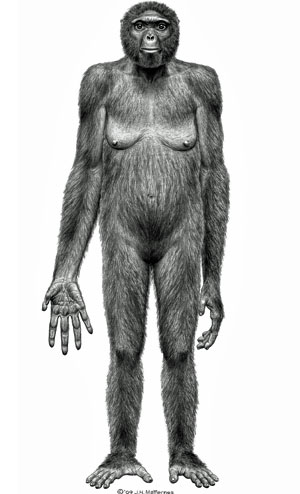 |
| http://www.macridesweb.com/life/NationalGeographicHO.html |
This fella' (above) is the earliest hominid uncovered, and has been heavily used as the basis of many scientific research and comparison to modern humans and human evolution. For the purposes of this blog, we will be focusing on Ardi's and his relatives' oral, jaw, and dentition structure, composition, and function.
From Ardi's profile, we can easily deduce that there are many immediate similarities between him, myself, and you, but there are also some differences. As we zoom in to his facial features, there are a few other things to be keeping in mind.
As a Hominid, Ardi was witnessing the emergence of the most primitive forms of tools and technology. Cooking, for example, dates back over
250,000 years ago. This was perhaps the most direct and immediate cause in jump-starting the road to dentition evolution. In addition to cultural evoution, human evolution had been progressive. Because evolution encompasses an array of factors that heavily impact the fundamental existence of mankind, let's focus on a holistic view of what was happening.
Beyondveg.com effectively shares an understanding of our ancestors' dentition and jaw structure during the age of Hominids. The interesting point made within the article is how dentition has shrunk as the human species became more evolved. This decrease of our teeth and jaw structure was caused both by, as we mentioned earlier, cultural and evolutionary influences. Below, I highlight the key components of the article that explains why this occurred.
Cultural Impact:
There is a linear relationship of decreased dentition and increased use of tools (stone tools/fire) and meat consumption.
- More meat consumption means less coarse veggies eaten, so less teeth needed to grind them!
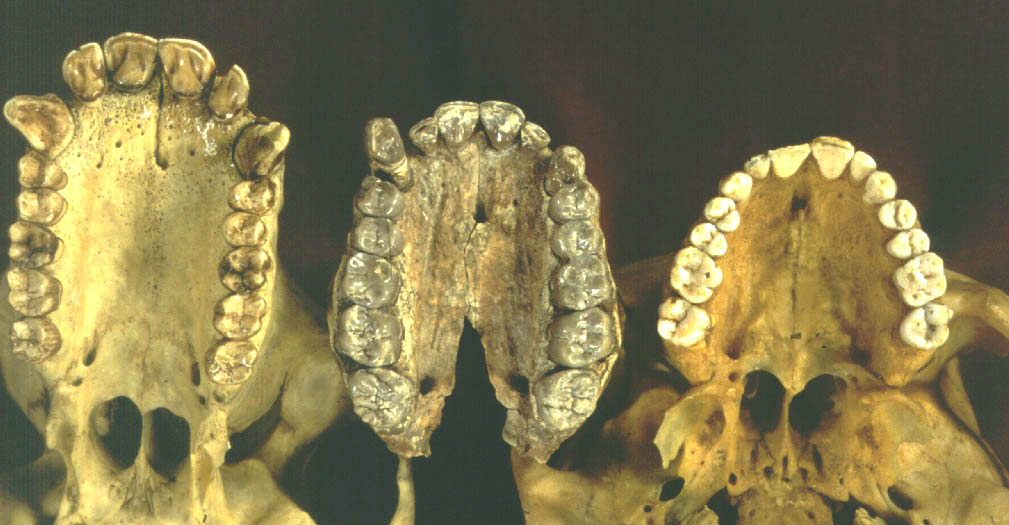 |
| http://www.jqjacobs.net/anthro/paleo/images/dentition.jpg |
- Cooking especially made it easier to chew food, thus from the above image, reduced canine teeth and increased the presence and significance of our molars. This "relaxed" dentition demonstrates robust anatomy. From my ANTH course, we learned that robust hominids were a muscular species as well as heavily vegetarian, with some originating from Australia: a diverse continent of plants and fruit.
Biological Impact:
It is clear that the purpose of the mouth serves multiple functions and is interconnected with other parts of the body. In particular, are brain size and the development of language.
The increase in brain size,
encephalization, and bipedalism of humans caused a shift in pressures of the mouth changing the shape of the mouth from being a long "U-shape" to a flatter "U-shape".
Humans are the only organisms to produce complex speech patterns. Coyotes howl, horses neigh, and cats meow, but the infinite sounds we can produce are from the patterns and stops within our mouths. This begs the question, "What's the relationship between language and the consumption of cooked food?" Evolution must have been working overtime to account for these two major changes.
- "Air, liquids and solid food all use a common pathway through the pharynx". Thus, humans are more likely to choke than other animals.
- The reduction of the roof of the mouth and lower jaw decrease efficiency of chewing. So, chew more at your next meal!
- Reduced dentition has caused crowding of teeth and more likelihood of infection (see future blog-post)
Was there a tradeoff between language and oral health? Clearly not a large enough one considering communication in today's world is imperative. Nonetheless, natural selection recognized this importance and allowed humans to adapt language, dentition, and brain size to optimize our existence.
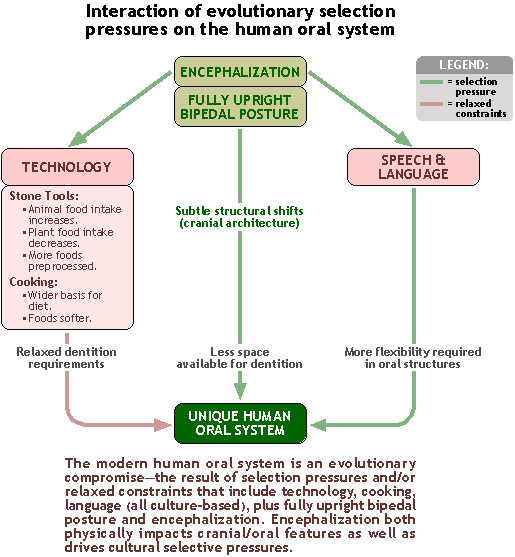 |
| http://www.beyondveg.com/billings-t/comp-anat/comp-anat-6b.shtml |
As I wrap up this pretty long blog post, it's clear to see that multiple factors have played in the physical development of our jaw structure and dentition. While we briefly looked over the holistic view of the influences environment and culture have played in oral system's evolution, it is critical to take a step closer and look at the specifics of what within our teeth truly changed, and how ultimately these changes have impacted the lives of present and future
Homo Sapiens.
Until next time,
Lators Gators!
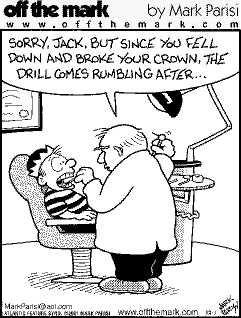 |
| http://www.asu.edu/courses/css335/images/Jack%27s%20broken%20crown%20cartoon.gif |
